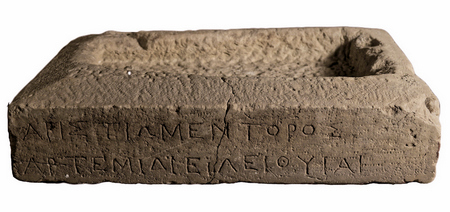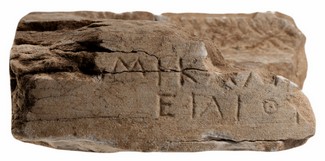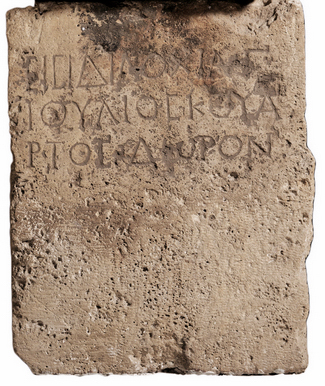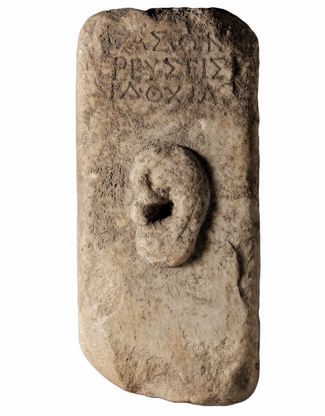The birth of a child is one of the most important events in a woman’s life. In ancient times, people invented deities that protected childbirth, because the risk of complications was high, as medicine was still far from the leaps achieved in our days. In Homer’s epics, the main goddess of childbirth, Eileithyia, stands by goddesses and heroines during the birth of their children. Apart from the texts of the ancient literature, the support of the goddess is also depicted iconographically and declared epigraphically on vases as early as the first half of the 6th c. BC, e.g. in the scene of the miraculous birth of Athena from the head of Zeus.
Five votive inscriptions to childbirth-protecting deities survive at Dion.
Later, the Homeric Eileithyia lends sometimes her properties to Artemis and is also worshiped as Artemis Eileithyia. The goddess is referred to with this name on an inscribed marble base of a statue of Hellenistic times found at the sanctuary of Isis:
ΑΡΙΣΤΙΩ ΜΕΝΤΟΡΟΣ/ΑΡΤΕΜΙΔΙ ΕΙΛΕΙΘΥΙΑΙ (Fig. 1)

The offering of Aristio of Mentor, placed in cavity of the base, must have been a statuette of a child, as we know from other sanctuaries.
At the sanctuary of Demeter, part of a small marble base of a votive sculpture was found, dating from about the same time as the previous one. Its inscription preserves the beginning of the name of Eileithyia: ΜΙΚ[ ]/ ΕΙΛΙΘ[ (Fig. 2).

After the founding of the cult of Isis at Dion, the Egyptian goddess also appears as protector of women in the vulnerable period of their lives as Isis Lochia. Gaius Julius Quartus in the second half of the 2nd or the first half of the 3rd century AD dedicates two votive offerings to the sanctuary of Isis, a marble lampstand (Fig. 3) and a porous rectangular pedestal (Fig. 4) with the same inscription: ΕΙΣΙΔΙ ΛΟΧΙΑ/ Γ ΙΟΥΛΙΟΣ ΚΟΥΑΡ/ΤΟΣ ΔΩΡΟΝ.


A third testimony is the votive relief of the 2nd or 1st c. BC with a depiction of a left ear and engraved the inscription ΙΑΣΩΝ/ΙΕΡΕΥΣ ΕΙΣ/ΙΔΙ ΛΟΧΙΑ (Fig. 5). Apparently, the priest Jason begs the goddess to be Επήκοος, that is to have his prayer heard.

The above offerings are addressed to female deities who protected the female gender and fertility, as also did most of the deities who, according to epigraphic testimonies, were worshiped in the two neighbouring sanctuaries, the earlier of Demeter and the later of Isis.

